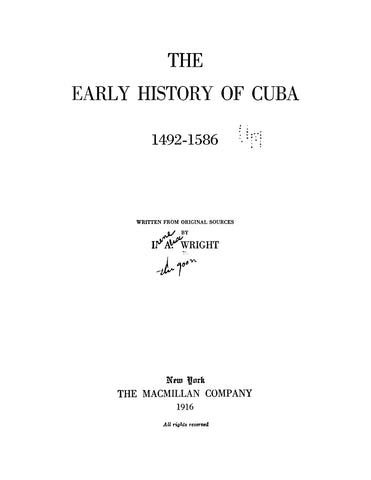
CUBA: Early History of Cuba 1492-1586
by Irene A Wright. 1916. 390p
The early history of Cuba is marked by the arrival of Spanish conquistadors, particularly Velazquez, who began capturing and enslaving the indigenous population in 1513 to work in La Espanola. The Spanish crown sanctioned this practice as a response to the declining native population in the Caribbean, leading to the establishment of a system that prioritized the extraction of resources, particularly through the exploitation of the native Cubans.
As the Spanish settlers focused on agriculture, Cuba's economy transitioned towards hog and cattle farming, with the export of hides becoming a significant source of wealth. The increasing value of land prompted settlers to seek larger land grants, further entrenching the system of exploitation and servitude. Velazquez was tasked with overseeing the treatment of the natives, but his administration often resulted in severe mistreatment and abuse.
Amidst this exploitation, Bartolome de las Casas emerged as a vocal advocate for the rights of the indigenous people, arguing against their enslavement and advocating for their freedom. His efforts eventually led to royal decrees aimed at protecting the natives, highlighting the moral and ethical dilemmas faced by the Spanish crown in their colonial pursuits. The complex interplay of exploitation, economic interests, and advocacy for native rights shaped the early history of Cuba and its colonial legacy.
